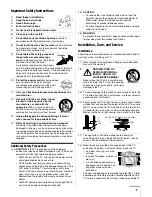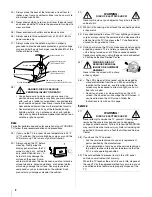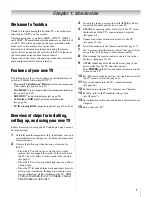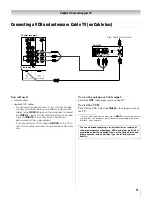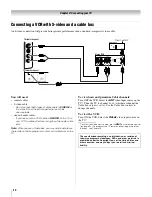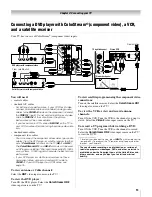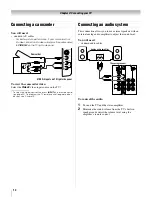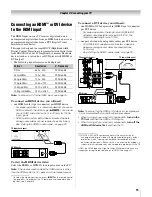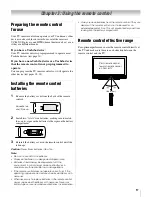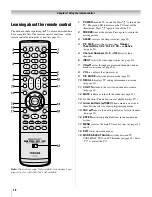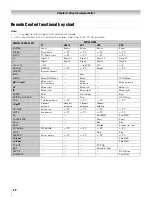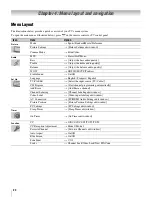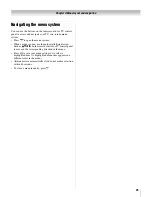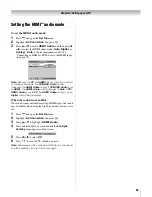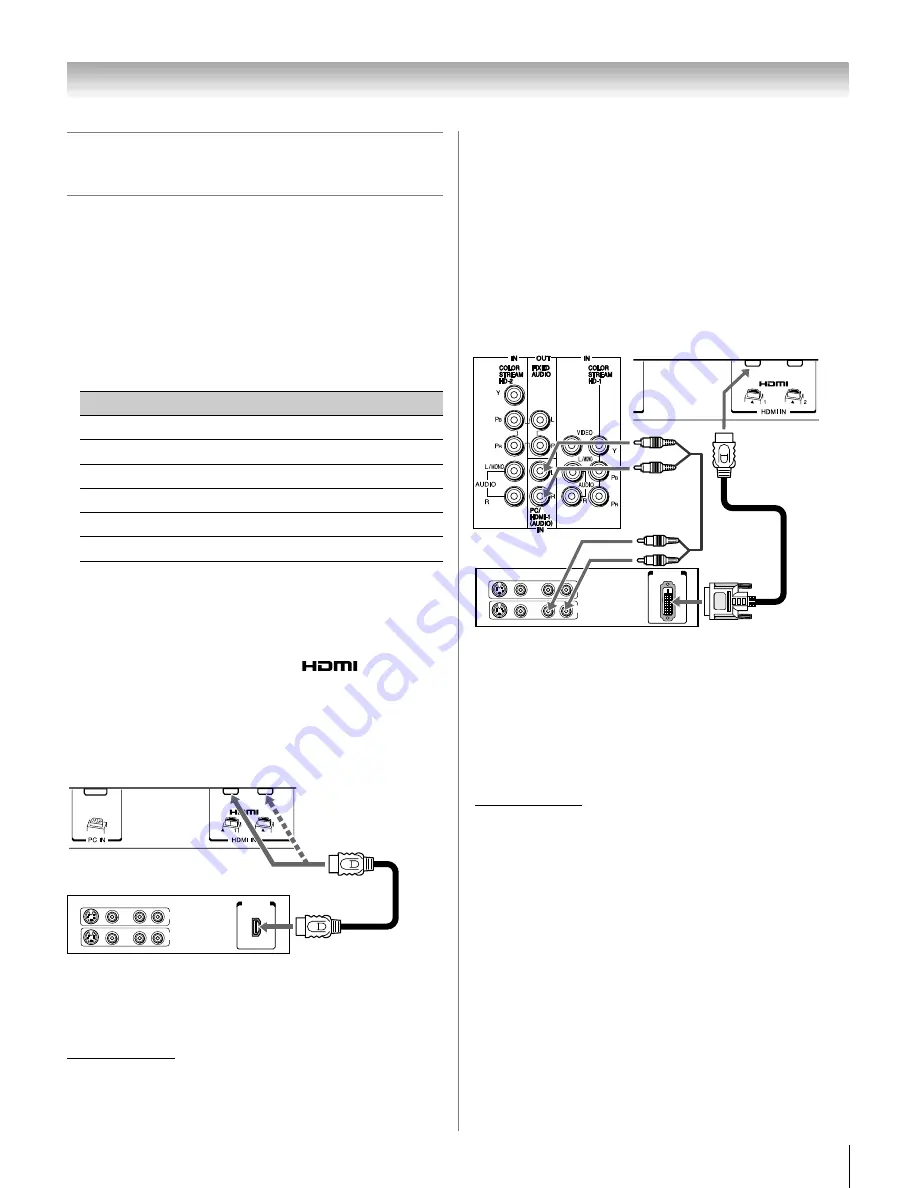
15
HL57 (E/F) Web 213:276
Chapter 2: Connecting your TV
Connecting an HDMI
™
or DVI device
to the HDMI input
The HDMI input on your TV receives digital audio and
uncompressed digital video from an HDMI source device, or
uncompressed digital video from a DVI (Digital Visual
Interface) source device.
This input is designed to accept HDCP (High-Bandwidth
Digital-Content Protection) program material in digital form
from EIA/CEA-861-861B–compliant
[1]
consumer electronic
devices (such as a set-top box or DVD player with HDMI or
DVI output).
•
The following signal formats can be displayed:
Note:
To connect a PC to the HDMI input, see page 16.
To connect an HDMI device, you will need:
•
one HDMI cable (type A connector) per HDMI device
– For proper operation, it is recommended that you use an
HDMI cable with the HDMI Logo (
). You should
use an HDMI cable shorter than 16.4 ft (5m) for 1080p
input signals.
– HDMI cable transfers both video and audio. Separate
analog audio cables are not required (see illustration).
– See “Setting the HDMI
™
audio mode” on page 29.
To view the HDMI device video:
Select the HDMI1 or HDMI2 video input source on the TV.*
Note:
If the audio output mode of the HDMI device is other
than the PCM mode, the TV speakers will not output sound.
*
To select the video input source, press
INPUT
on the remote control
(
-
page 30). To program the TV remote control to operate other
devices, see Chapter 3.
To connect a DVI device, you will need:
•
one HDMI-to-DVI adapter cable (HDMI type A connector)
per DVI device
– For proper operation, the length of an HDMI-to-DVI
adapter cable should not exceed 9.8 ft (3m). The
recommended length is 6.6 ft (2m).
•
one pair of standard analog audio cables per DVI device
– An HDMI-to-DVI adapter cable transfers video only.
Separate analog audio cables are required (see
illustration).
– See “Setting the HDMI
™
audio mode” on page 29.
Note:
To ensure that the HDMI or DVI device is reset properly,
it is recommended that you follow these procedures:
•
When turning on your electronic components,
turn on the
TV first
, and then the HDMI or DVI device.
•
When turning off your electronic components,
turn off the
HDMI or DVI device first
, and then the TV.
[1] EIA/CEA-861-861B compliance covers the transmission of
uncompressed digital video with high-bandwidth digital content
protection, which is being standardized for reception of high-
definition video signals. Because this is an evolving technology, it
is possible that some devices may not operate properly with the TV.
HDMI, the HDMI logo and High-Definition Multimedia Interface are
trademarks or registered trademarks of HDMI Licensing LLC.
Format
Resolution
V. Frequency
VGA
640 × 480
59.94/60Hz
480i (60Hz)
720 × 480
59.94/60Hz
480p (60Hz)
720 × 480
59.94/60Hz
720p (60Hz)
1280 × 720
59.94/60Hz
1080i (60Hz)
1920 × 1080
59.94/60Hz
1080p (24/60Hz)
1920 × 1080
59.94/60Hz
VIDEO AUDIO
L
R
R
L
IN
OUT
IN
HDMI
OUT
HDMI device
TV lower back panel
VIDEO AUDIO
L
R
R
L
OUT
IN
DVI / HDCP
OUT
IN
DVI device
TV upper back panel
TV lower back panel
05C02.fm Page 15 Thursday, March 22, 2007 3:23 PM
Summary of Contents for 26HL57
Page 51: ...51 Notes ...



